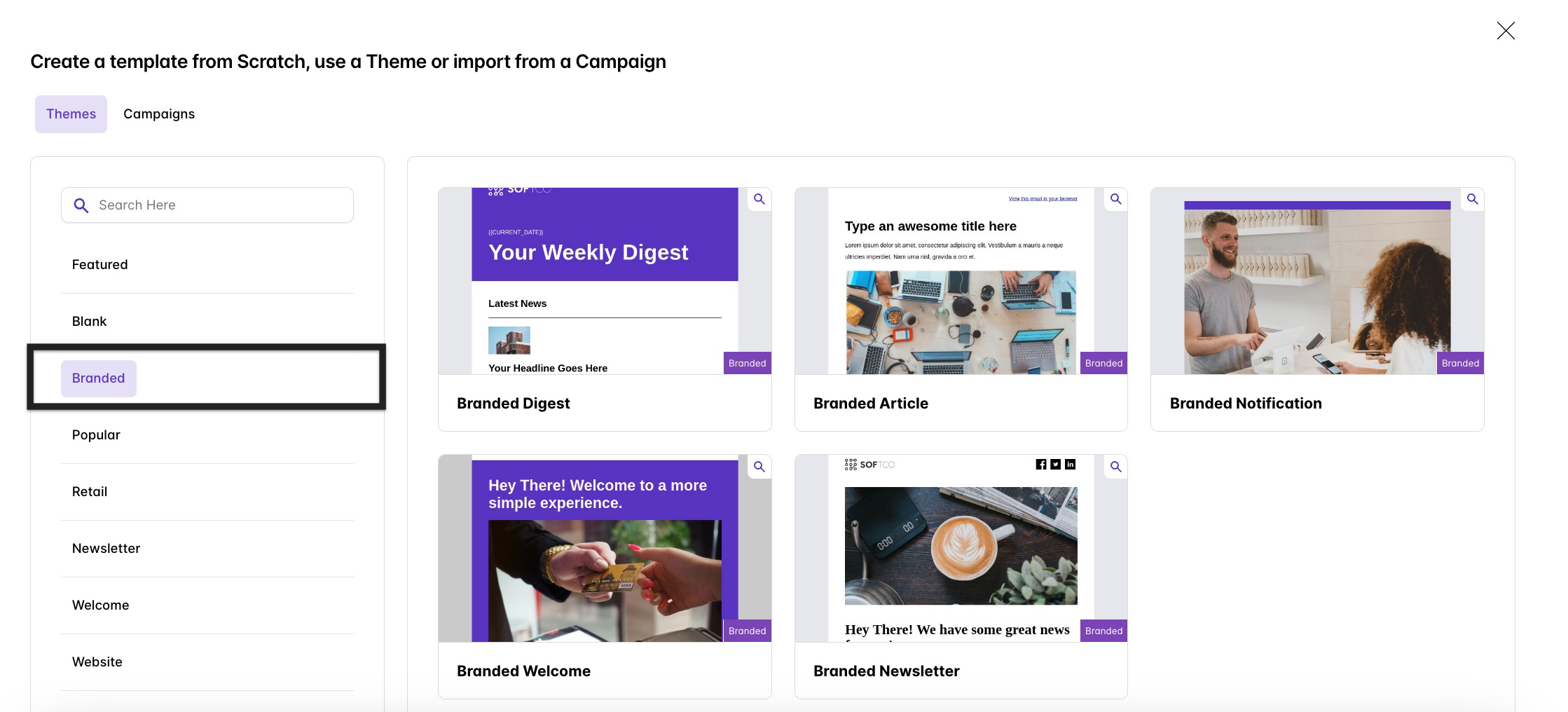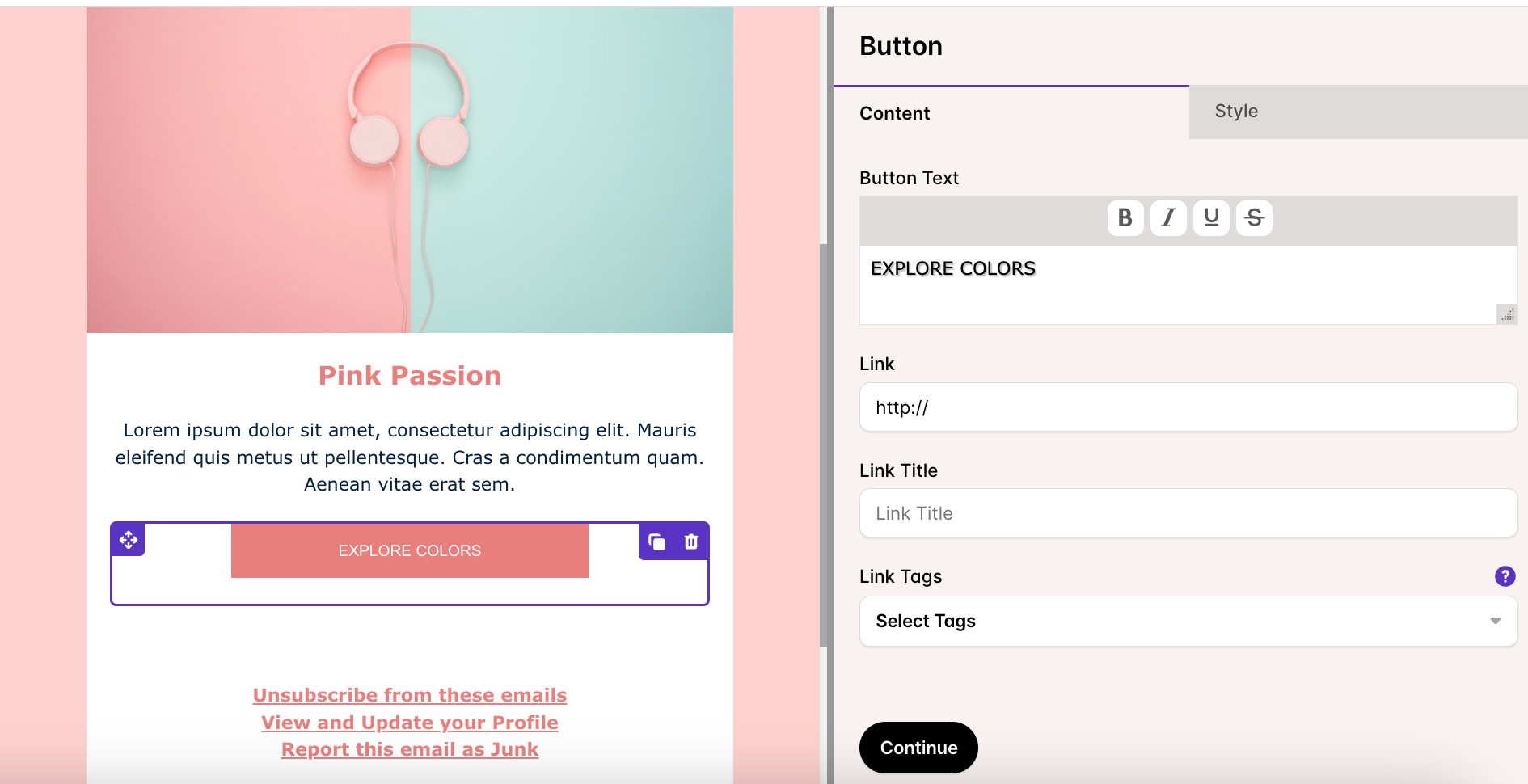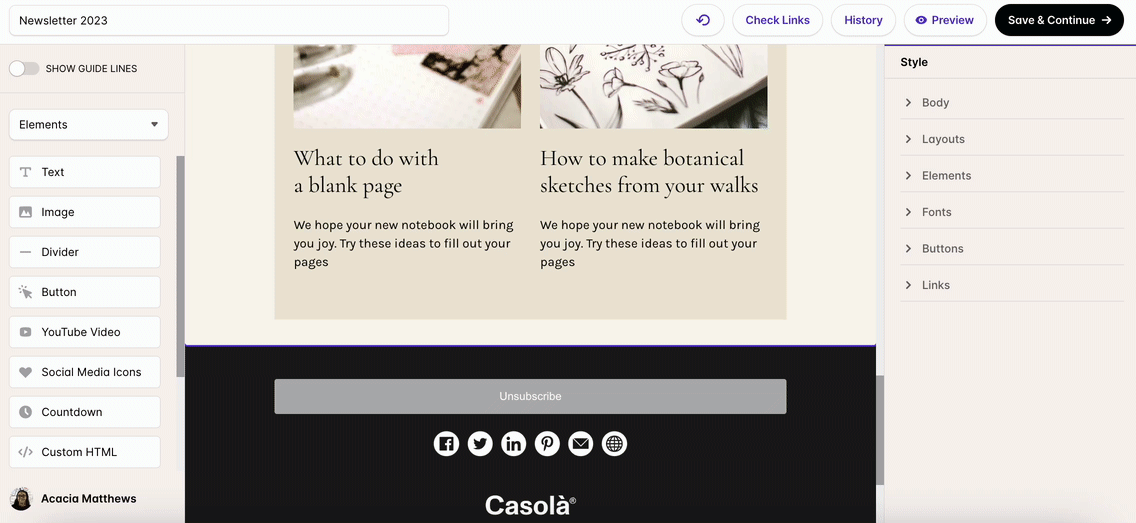Email Templates - A Best Practice Guide
Creating well-designed email templates is key to ensuring you are able to quickly and effectively deliver on-brand, relevant and engaging email content for your audience.
Whilst this article covers best practices, we also have a step-by-step walkthrough on how to create an Email Template in Transpond.
IN THIS ARTICLE
Layout
It’s essential to consider the layout of your email templates. For example, do you want to start your template with some clever wordplay, or would you prefer to catch the reader's eye with a prominent image? Whichever one you choose, it’s worth giving some thought to which one is the most captivating and appropriate for your audience.
You should also keep in mind the ratio of text to image - a large block of text and it could be too overwhelming for the reader. A page full of images and it might be easier to miss important details. Somewhere in the middle might be ideal, depending on your content.
Then there’s the Call-to-action buttons (CTAs). These should be in a place where they catch the eye - the perfect spot in the template where it makes the most sense to take action. For example, if you’re talking about a new newsletter it’s a good idea to make sure that the ‘Sign Up now’ button is near. Check out more information in the
Call-to-action section.
How to change the layout in Transpond
Using the Transpond drag-and-drop editor, you can choose ‘Layouts’ from the dropdown to explore and see what works best for you. Simply drag the layout you are interested in onto the stage - you can add as many layouts as you need. For example, you might drag a 2 Column layout onto your template as a split product section. We’ve even got some ready-made themes that make use of different layouts. These might do the trick if you’re looking for some inspiration.

Branding
With Branding being at the heart of every business, this should translate across to your Email templates too. Make sure your colours, images and fonts are consistent in those, so that your audience can easily recognise your brand image and style.
How to keep your branding consistent in Transpond
Apart from manually maintaining your templates - there’s also the option to speed the process up by having Transpond extract your branding from your website using its
Brand Analyzer. This can automatically generate branded options by scanning your website. To try this feature, choose a ‘Branded’ theme from the Theme picker.

Personalisation
Personalising email templates make for a very eye-catching email. This is a great way to maximise the chances of your readers opening and engaging with your email if they’re spoken to directly. Adding their name at the start of the email (or in the subject) is a good way to start, and then finishing with your name also helps strengthen trust in your business and brand.
How to personalise in Transpond
In Transpond, there are many options to add a personal touch to your email templates using what we call Merge Tags. Read more about those
in this article.
For example, to add any unique information you have stored against your contact you can use
Custom Field Merge Tags.

Responsive Design
Having a responsive design for your email templates means that the quality of it isn’t affected depending on the reader's settings. For example, optimising your images for the web to make sure they’re easily available on both a phone and a laptop or accounting for how your email might look if the reader is using a device in dark mode.
It’s also important to remember that different email clients can also have an effect on what your emails look like.
Transponds’ email templates are already optimised for the best performance on the web, so all the hard work is already done!
Tip: Use the ‘Preview’ button in the top right corner of the editor to see your email on different devices.

CTAs (Call-to-Action)
A Call-to-action prompts your reader to do something after reading your email. Depending on your industry there are lots of different ways to include CTAs:
- If you’re selling a product or service, you could entice customers with ‘Get Yours Now’’
- When offering a discount to encourage new customers, then you could use the option to ‘Enjoy 50% off’’
- Even if you’re introducing a new article, a snippet followed by ‘Tell me more’ is a great way to get a customer to your website.
When it comes to best practices, you’ll want to make sure that your CTAs are in the right place - where they’re prominent and relevant. Try not to use too many, which could confuse your reader. But if the email has sections, it might be worth having it in each one to maximise your chances of a click-through.
CTAs should also be on-brand with your business theme and tone. The cherry on top is making sure they link to branded content so that your reader can easily recognise the consistency. Find out more details in our
Branding section here.
How to add CTAs in Transpond
To add these in the drag-and-drop editor, simply choose the ‘Elements’ dropdown and use the “Button” option to add your own. Click on the button itself to edit the colour, text and hyperlink.

Unsubscribe Links
Making the link to unsubscribe clear and visible is something that will benefit you in the long run. Without this link as an option for your readers, the chances of getting spam reports are high.
How to add an unsubscribe link in Transpond
If you’re using a Transpond pre-set theme, each one includes an unsubscribe link template that you can customise by clicking on the text to open the editing panel.
If you would like to add your own custom unsubscribe link, choose ‘Elements’ from the dropdown in the left panel > Button. From there, you can customise the design and choose Website > Merge Tags > {{_UNSUBSCRIBE_URL}}.

Bonus Tip: If you’re emailing new contacts for the first time you can ask them to re-confirm their subscription - in the ‘Blocks’ section of the drag and drop editor, choose the ‘GDPR Confirmation’ in your first campaign to them to make sure they’re happy to keep getting emails from you.






